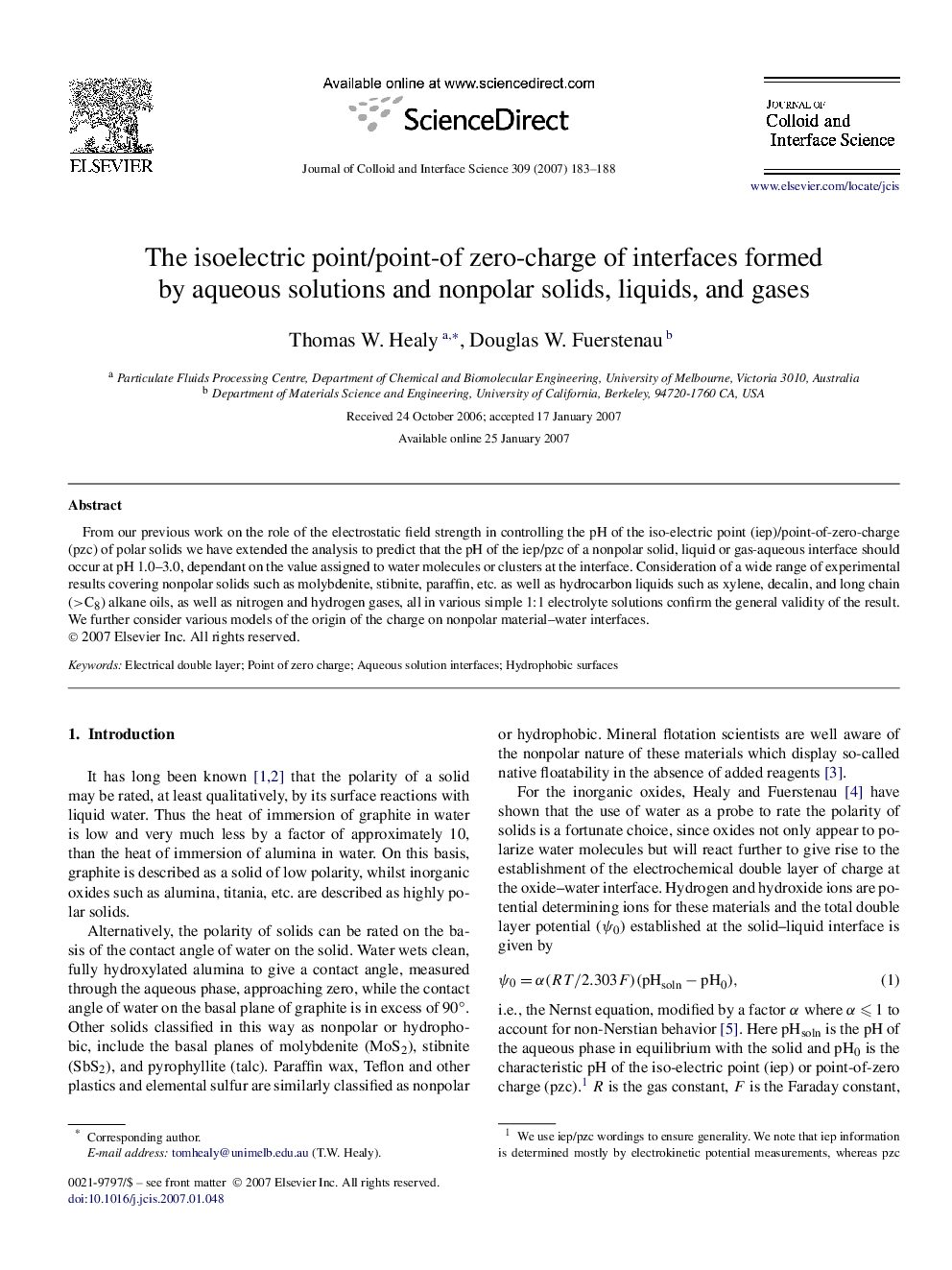| Article ID | Journal | Published Year | Pages | File Type |
|---|---|---|---|---|
| 612977 | Journal of Colloid and Interface Science | 2007 | 6 Pages |
From our previous work on the role of the electrostatic field strength in controlling the pH of the iso-electric point (iep)/point-of-zero-charge (pzc) of polar solids we have extended the analysis to predict that the pH of the iep/pzc of a nonpolar solid, liquid or gas-aqueous interface should occur at pH 1.0–3.0, dependant on the value assigned to water molecules or clusters at the interface. Consideration of a wide range of experimental results covering nonpolar solids such as molybdenite, stibnite, paraffin, etc. as well as hydrocarbon liquids such as xylene, decalin, and long chain (>C8>C8) alkane oils, as well as nitrogen and hydrogen gases, all in various simple 1:1 electrolyte solutions confirm the general validity of the result. We further consider various models of the origin of the charge on nonpolar material–water interfaces.
Graphical abstractWe predict that the point of zero charge of hydrophobic solids, liquids, or gases (pH0pzc) is at pH 1.0–3.0, depending on the size of ionizing sites at the interface. Literature results confirm that all hydrophobic materials in water have pzc's approaching this value. 4.606RT(pH)pzc=(Fμ)+constant4.606RT(pH)pzc=(Fμ)+constantF is the electrostatic field strength of the lattice For F→0F→0, i.e., for nonpolar materialspHpzc0≈1.0–3.0
